 00:21:00
00:21:00
The Square Kilometre Array
Rosie Bolton describes the importance of this huge project and some of the interesting problems which needed to be solved in its planning and implementation.
More details | Watch now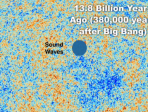 00:33:00
00:33:00
The State of the Universe
Our Universe was created in 'The Big Bang' and has been expanding ever since. Brian Schmidt describe the vital statistics of the Universe, including its size, weight, shape, age, and composition. He also tries to make sense of the Universe's past, pr....
More details | Watch now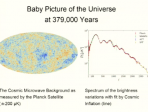 00:31:00
00:31:00
Cosmic Microwave Background Radiation and its Role in Cosmology
In the first half of the 20th century other galaxies were recognized, their red shift measured and theories of the whole universe were developed. They included Big Bang and Steady State. Arno Penzias and I found the Cosmic Microwave Radiation (CMB) i....
More details | Watch now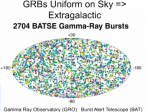 00:30:00
00:30:00
Gamma Ray Bursts: Windows on the Universe
Gamma-Ray Bursts are the most powerful explosions in the universe. They happen about once per day in the visible universe. Their fantastic engines pump out as much energy in a matter of seconds as all the stars in a galaxy do in a billion years. This....
More details | Watch now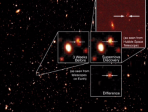 00:33:00
00:33:00
What We Learn When We Learn that the Universe is Accelerating
The 1998 discovery that the universe's expansion is accelerating was not only unexpected, but it also led to the postulation of a previously-unknown 'dark energy' forming almost three-quarters of the "stuff" of the universe. How was this discovery ma....
More details | Watch now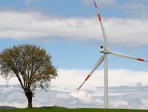 00:44:00
00:44:00
The Impact of Big Science on Astrophysics
The Chandra and Hubble Telescopes are in space and each costs (through operations) several billion dollars. VLT is on the ground but over 20 years of operations will also cost in excess of a billion. They all fall therefore in the category of what ....
More details | Watch now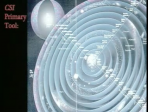 00:35:00
00:35:00
The Large Hadron Collider and the Super World
In the period 1990 to 2001 many powerful new astronomical observational facilities have become operational. Hubble Space telescope was launched in 1990; it was followed by the construction of Keck I in 1992 and Keck II in 1996, by the completion of....
More details | Watch now 00:40:00
00:40:00
The Beginning and Development of the Universe
By careful investigation of relic left on the cosmic scene we have very good evidence and constraints on what has occurred since the beginning of the Universe. This talk reviews the evidence including images and information from the very first light....
More details | Watch now 01:01:00
01:01:00
Discovery of a dynamic atmosphere at one of Saturn’s moons, Enceladus
In recent years, Enceladus, Saturn's sixth largest moon, has become a major attraction for scientists, with many believing it offers the best hope we have of discovering other life in our solar system. NASA's Cassini spacecraft has been orbiting Satu....
More details | Watch now 01:01:00
01:01:00
The end of the world in 2012? Science communication and science scares
21st December 2012 marks an ending of the Mayan calendar and is asserted by some to mark the end of the world. This scare is examined from an astronomical point of view, followed by some reflections on what the scare tells us about the communication ....
More details | Watch now 00:47:00
00:47:00
Chasing Venus: the race to measure the heavens
New York Times Best Selling and award-winning author Andrea Wulf tells the extraordinary story of the first global scientific collaboration set amid warring armies, hurricanes, scientific endeavour and personal tragedy. On 6 June 1761 and 3 June 1769....
More details | Watch now 01:00:00
01:00:00
Stones from the sky: A heaven-sent opportunity to talk about science
Meteorites provide us with laboratory samples from distant bodies including asteroids, comets, the moon, Mars and even ancient stars. Witnesses to the extraordinary event when one is seen to fall from the sky, or anyone finding a sample on the ground....
More details | Watch now
